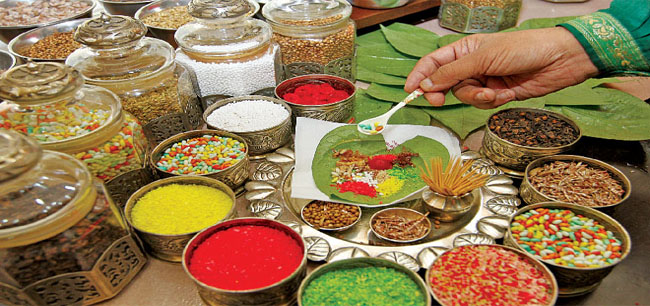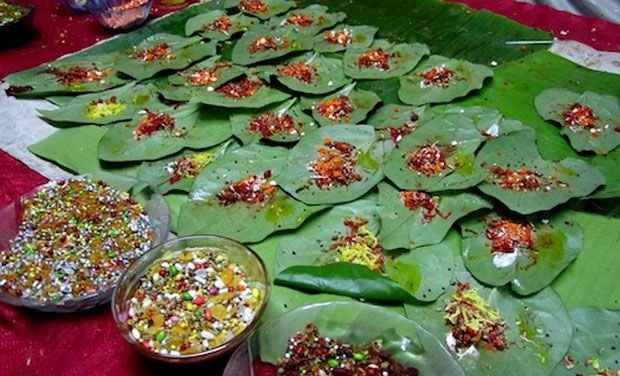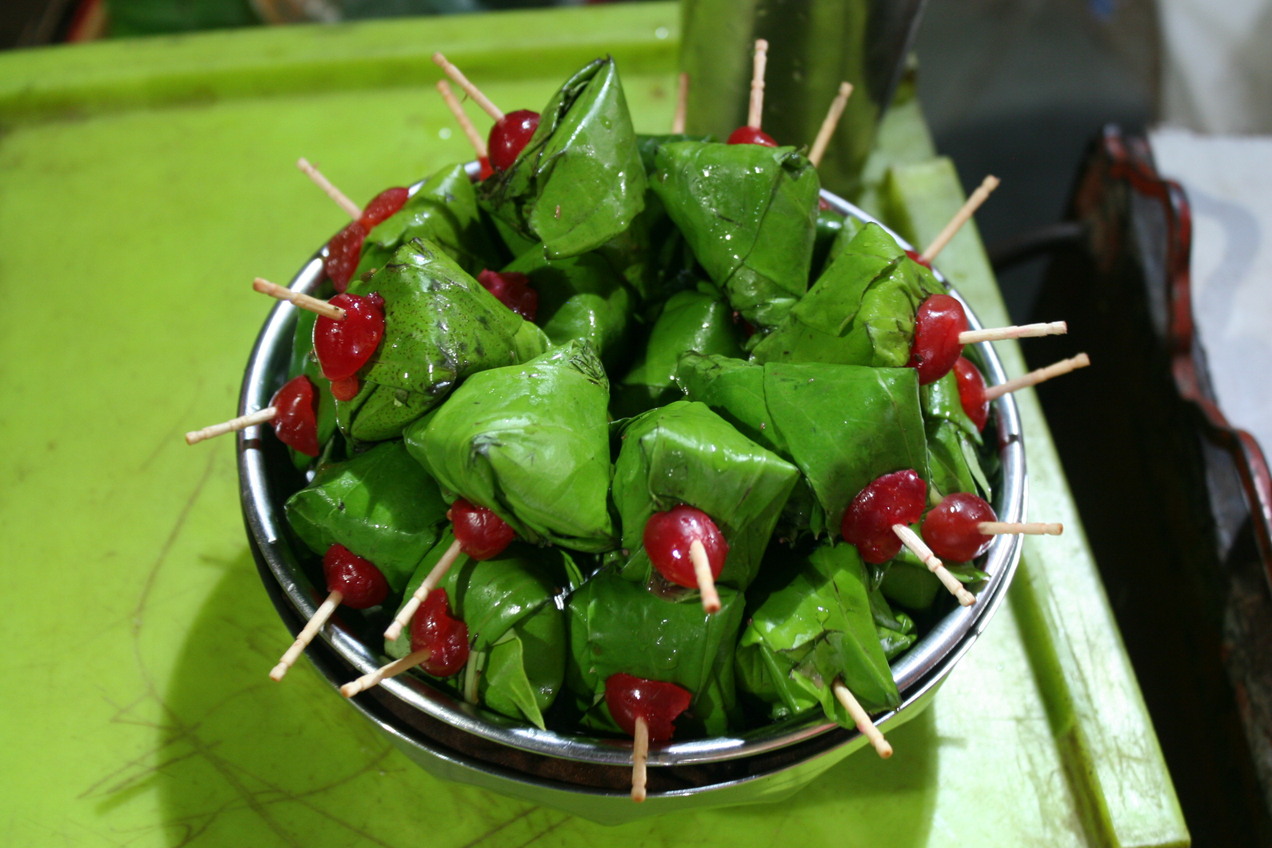Paan is something very typical that we can usually eat at the end of a traditional meal. You can buy at every street corners. There are so many varieties. Basically, it makes with many spices (nutmeg, saffron, cardamom…), areca nuts, lime which they add tobacco. And all is wrapped up in a betel leaf. Ask “sweet paan” or “mitha paan” which are without tobacco. People chew paan after meals. Famous for its medicinal values, the other name of paan is tambool. It helps for digestion, stimulates et purifies. It costs around 1 and 5 rupees. It has a unique taste that western people generally love or hate.
Chewing betel and areca nuts is a widespread habit very popular in Asia or around the world inside Asian migrant communities. People chew betel for several reasons, among those for its medicinal values (stopping hunger, good breath) and for cultural practices. You can find those products in “paan shops” in free access in many countries out Asia.
UK today is the first country out Asia to import paan. The amount has doubled since the 1980s. In some migrant communities, most of the people still eat that as a tradition. Young children start with “sweet paan” and it is around teenage they add tobacco.
During priest, two leafs of tambool with areca nuts are given to the God. Usually, people are singing whie they are making the gift. Paan has a strong social function. It is one of the basic marks of hospitality. It was very popular during weddings. In Maharashtra, there is a special habit during wedding. The wife holds a paan in her mouth between her lips and her teeth and her husband has to get some. This sharing is a strong wish of honour and love for the couple. On the other side of the country, in Rajput, some women used to savour their last chewing before jumping into “Sati” fire. Thus, new mothers use to eat some paan the days after their childbirths. Spices help for recovery.
However, as many good stuffs, we shouldn’t abuse of it. Indeed, according the International Agency of Cancer Research, paan is responsible for many oral cancers. It has not only medicinal values. Areca nuts and tobacco are mainly the origin of those diseases.


 Français
Français

